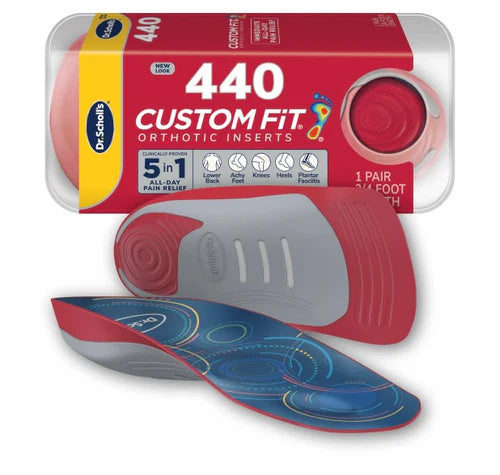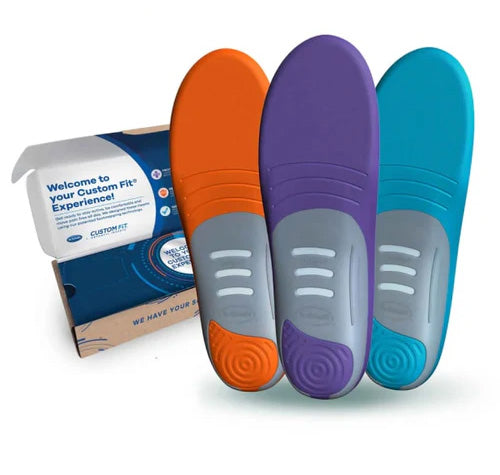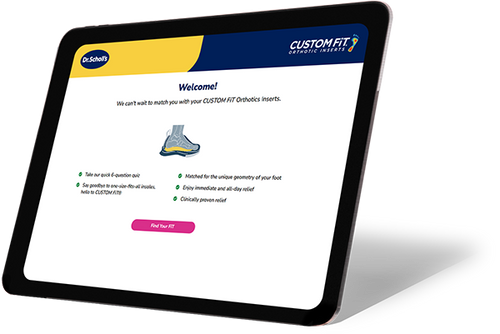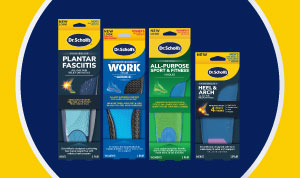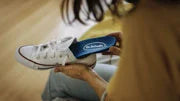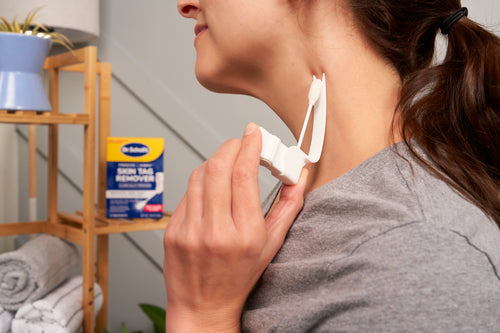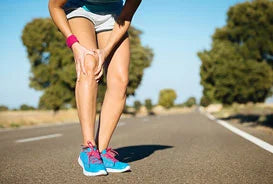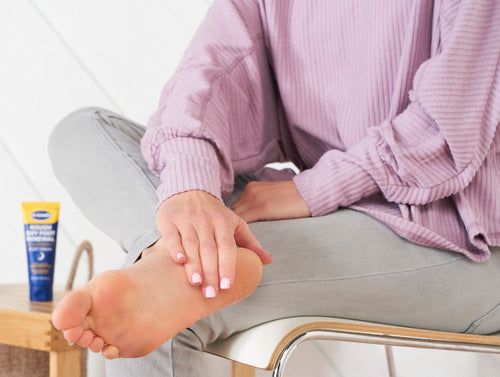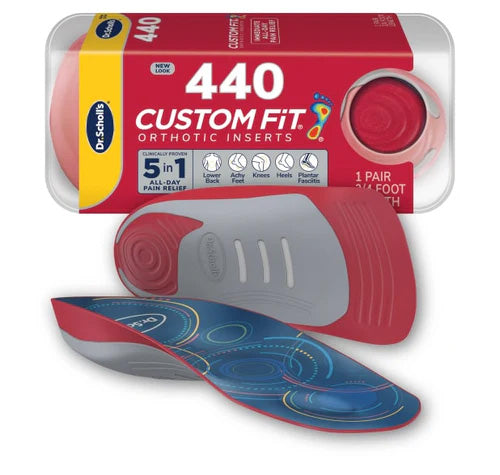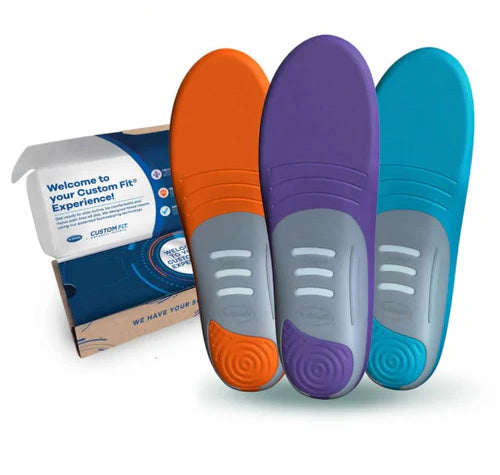As you might have guessed by the name, Achilles Tendinitis involves inflammation in the Achilles tendon. As the largest tendon in your body, it connects your calf muscles to the heel bones in your feet and helps you walk, run and jump. Symptoms of Achilles Tendinitis include pain or stiffness along the Achilles tendon, pain that appears in the morning or the day after exercising, or pain that gets worse with activity. There may also be swelling or thickening of the Achilles tendon.
THE FACTS ON ACHILLES TENDINITIS PAIN:
WHAT IS ACHILLES TENDINITIS?
There Are Two Kinds of Achilles Tendinitis:
- Noninsertional happens when fibers in the middle of the Achilles tendon break down, swell up or thicken. It’s most common in younger, active people.
- Insertional happens in the lower part of your heel, where the Achilles tendon is attached or inserted into the heel bone. It can also be accompanied by heel spurs and may happen to anyone at any age, even if you’re not particularly active.
Both kinds may also include hardening in areas of the damaged tendon. Within the two kinds, there are two types: acute and chronic. The former can turn into the latter if you don’t manage the pain or if the stress on the Achilles tendon continues.
Only a doctor can accurately diagnose.
WHAT CAUSES ACHILLES TENDINITIS?
According to the American Academy of Orthopedic Surgeons, there’s no specific injury that might cause the symptoms of Achilles tendinitis to appear. Rather, it’s caused when you put too much strain on the tendon by exercising too much or without giving your body a chance to warm up. Heel spurs and tight calf muscles can also cause Achilles tendon pain, which is why, for the latter, warming up and stretching before strenuous exercise is important.
DON'T LET ACHILLES PAIN STOP YOU IN YOUR TRACKS
Dr. Scholl’s® doesn’t make a product specifically for achilles tendinitis, but we do offer several products to help you move with comfort while the achilles tendon heals. Dr. Scholl’s Orthotics for Heel Pain help reduce the shock of heel impact. Dr. Scholl’s Massaging Gel® Heel Cups help raise your heel, which shortens the tendon and takes pressure off it while reducing heel impact and keeping shoes from rubbing on your Achilles tendon.
If you think you have the symptoms of Achilles tendinitis, it’s important to talk to your doctor about your symptoms. He or she can not only diagnose the trouble but also provide treatment options that may include:
- Resting by either decreasing or even stopping pain-inducing activities
- Elevating your feet and legs to help reduce the strain
- Applying ice for up to 20 minutes several times per day as needed to help reduce any inflammation
- After the first 48 hours, apply mild heat to loosen the Achilles and promote healing
- Medication as directed by a doctor
- Special exercises or therapies to help strengthen calf muscles and reduce Achilles tendon strain
- Shoe inserts or orthotics that help reduce the shock of heel impact and relieve the Achilles tendon pain
- Heel cups or cushions to help raise your heel, which shortens the tendon and takes pressure off it while reducing heel impact and keeping shoes from rubbing on your Achilles tendon
†SOURCE: Kadakia, A. R., MD. (2010, June). Achilles Tendinitis (S. J. Fischer MD & S. L. Haddad MD, Eds.). Retrieved January 24, 2017, from http://orthoinfo.aaos.org/topic.cfm?topic=a0014
EXPLORE MORE EXPERT ADVICE FROM DR.SCHOLL'S
Related Symptoms & Conditions
Related Articles
How to Prevent Common Running Injuries
7 tips to prevent common running injuries like shin splints, runner’s knee and plantar fasciitis.
How to Manage Pain from Wearing High Heels
Tips to help you choose and wear heels that are more comfortable.
Why High Heels Can Lead to Foot, Knee or Lower Back Problems
Learn why wearing high heels can have a detrimental effect on your knees, hips and lower back.
Why It’s So Important to Take Care of Your Feet
Foot care, tips to keep your feet healthy and continue to be active for years to come.
Frequently Asked Questions
Where is the Achilles tendon?
The Achilles tendon is located just above the back of the heel at the low back end of the calf. It connects the heel bone to the calf muscle. The Achilles tendon is the largest tendon in the body and plays an important role in the movement of our feet.
How to stretch Achilles tendon
It is important that you ease into stretching of the Achilles to ensure you do not cause any trauma.
A basic calf stretch is very effective for stretching the Achilles tendon. Follow these steps:
- Using a wall to assist, position the leg you want to stretch straight behind you.
- Place the other leg in front of you with the knee bent towards the wall.
- Lean against the wall until you feel a gentle stretch and hold for 30-60 seconds.
- Repeat this stretch 3-5 times.
You can also stretch the Achilles tendon using the stairs as an aid following these steps:
- While placing your hands against a wall or on handrails for support, plant one foot firmly on a step.
- Place the other foot (the foot of the leg you’ll be stretching) so that the front of the foot is on the edge of the step with the heel hanging off.
- Slowly lower the heel below the step until you feel a gentle stretch. Hold the stretch for 30-60 seconds.
- Repeat the stretch 3-5 times.
Stop the exercise if you feel any discomfort and contact your healthcare provider if you have persistent or severe pain.
How to stretch Achilles tendon while sitting
You can perform simple heel raises to stretch the Achilles tendon while sitting on a chair.
- Starting with your feet flat on the floor, slowly raise your heels off of the floor and hold for 5 seconds.
- Slowly lower your heels back to their original position.
- Repeat 20 times.
Another way to stretch the Achilles tendon while sitting is with a towel calf stretch.
- Start by sitting on the floor with your legs straight in front of you.
- Wrap a towel around the bottom of one foot. The towel should be placed at the ball of the foot, below the toes.
- Grasp the ends of the towel and with a straight back, gently pull the towel towards you until the foot comes off of the floor and you feel a gentle stretch. Hold the stretch for 5 seconds.
- Lower the foot back to the floor.
- Repeat this exercise 20 times on each leg.
What is Achilles tendonitis
Achilles tendonitis is a stretching and micro tearing of the Achilles tendon that typically occurs at two areas. 1) Insertional Achilles Tendonitis is a stretching and micro tearing of the Achilles at the point of attachment to the heel. These microtears can cause inflammation and pain and can become severe if continued pressure is placed on them. There is also a 2) Non-insertional Achilles Tendonitis that occurs at a spot approximately 3” up from the heel, depending upon your height. At this spot, the Achilles actually turns 90 degrees and is susceptible to overstretching that can lead to rupturing of the Achilles.
Achilles tendonitis first occurs “acutely” meaning a first time singular experience. When not allowed to heal properly, it can become a chronic concern that will require more care to ensure that the tendon does not rupture. As the biggest tendon in the body, tendons do not have the level of circulation such as that of muscles. Therefore, healing time can be much longer than expected. Getting the right diagnosis from your physician of the type and extent of your Achilles injury, if you have one, is important to ensure you can allow it to fully recover.
How to treat Achilles tendonitis
See a doctor for guidance on what to do for Achilles tendonitis. It’s often possible to treat a sore Achilles tendon and address pain and inflammation at home with self-care measures, including the strategy known as RICE:
Rest – It’s important to allow the inflammation from Achilles tendonitis to subside. This may mean staying off your feet for a period of time or using crutches to keep the weight off of the problematic leg in order to help heal Achilles tendonitis.
Ice – Place a covered ice pack over the Achilles tendon to help with pain and swelling. This can be done several times a day for up to 20 minutes at a time.
Compression – Wraps and bandages can be used to ease inflammation. This can also help restrict movement that can hinder the healing process.
Elevation – Rest with your leg elevated above the heart as often as you can during the day to help reduce swelling. You can use a pillow to prop your leg up.
Other treatments for Achilles tendonitis include:
Pain relievers – Your doctor may recommend over-the-counter NSAIDs (non-steroidal anti-inflammatory drugs) for pain and inflammation. These include naproxen and ibuprofen. If you don’t get relief from over-the-counter pain relievers, your doctor may prescribe stronger medications.
Surgery – In more serious cases, surgery may be recommended to repair an injured Achilles tendon.
Physical therapy – A physical therapist can devise an exercise plan to help promote healing and strengthening of the Achilles tendon. Physical therapy can be especially beneficial to strengthen the Achilles tendon after surgery.
Can you walk on a partially torn Achilles tendon?
Yes, you can walk on a partially or completely torn Achilles tendon. Although Achilles tendon ruptures are painful, mobility in the ankle typically remains, allowing for various movement including walking. However, people who have ruptured an Achilles tendon may have trouble pushing the foot off of the ground when walking.
Why does my Achilles tendon hurt?
Pain in the Achilles tendon may be an indication of Achilles tendonitis which is an overuse injury that results in pain and inflammation of the Achilles tendon. In more serious cases, there may be a partial or complete rupture or tear of the tendon. If your pain persists or the pain is sudden and severe, see your doctor for an evaluation.
How long does Achilles tendonitis take to heal?
Healing time for Achilles tendonitis varies. Mild cases of Achilles tendonitis may only take a few days to heal using traditional self-care methods such as icing and rest. However, chronic and more severe cases of Achilles tendonitis that result in a rupture may require surgery and/or long-term care. The Achilles tendon can take months to completely heal following surgery.
How long Achilles tendonitis lasts depends on the severity and mitigation efforts. Addressing Achilles tendonitis as early as possible can help reduce the risk of further injury and progression to a chronic condition. Preventive measures along with prompt attention can help improve the outcome and shorten healing time.
How to strengthen Achilles tendon
One effective way to strengthen the Achilles tendon is with an exercise called the heel dip. You can do this exercise using stairs.
- While placing your hands on handrails or against a wall for stability, stand on a step with only the front part of your feet placed on the step. Let your heels hang off the step.
- Slowly lower your heels below the step as far as it’s comfortable. You should feel a slight stretch.
- Slowly pull your heels back up so that they’re once again in line with the step.
- Repeat this movement in a slow and controlled fashion 20 times.
Another helpful Achilles tendon strengthening exercise is the classic heel raise. You can do this exercise from a simple standing position.
- Start by standing on a solid floor with your feet flat on the floor.
- Slowly rise up so that your heels are off of the floor and you’re standing on your toes. Stay on your toes for 5 seconds.
- Slowly lower your heels back to the floor.
- Repeat 20 times.
Only perform these exercises if you can do so without pain or discomfort. Contact your healthcare provider if you experience persistent or severe pain.
What does Achilles tendonitis feel like?
Achilles tendonitis usually begins with pain or an aching sensation in the lower back end of the calf or in the back of the heel. The pain is often most pronounced when walking or running. Some people find that it’s difficult to push off with the foot when walking. Pain can also occur when standing on the toes or when flexing or pointing the toes. The area may be tender, stiff and swollen.
Why is it called Achilles tendon?
The Achilles tendon was named after a character in Greek mythology. According to legend, Achilles’ mother took him to the River Styx because it was said to have powers that could render one invincible. Achilles was dipped in the river while being held by the heel. Because of this, the heel was not washed in the river and therefore was the only vulnerable part of Achilles’ body.
Additional Resources
- https://www.healthline.com/health/achilles-tendinitis
- https://www.webmd.com/fitness-exercise/recovering-from-achilles-tendon-injury#1
- https://www.healthline.com/health/achilles-tendon-stretch#achilles-stretches
- https://www.webmd.com/fitness-exercise/stretch-achilles-tendon
- https://www.webmd.com/fitness-exercise/picture-of-the-achilles-tendon#1
- https://www.mayoclinic.org/diseases-conditions/achilles-tendinitis/diagnosis-treatment/drc-20369025
- https://www.ncbi.nlm.nih.gov/pmc/articles/PMC4655731/#:~:text=Patients%20with%20rupture%20of%20the,on%20the%20injured%20limb%20alone)
- https://www.mayoclinic.org/diseases-conditions/achilles-tendon-rupture/symptoms-causes/syc-20353234
- https://www.mayoclinic.org/diseases-conditions/achilles-tendinitis/symptoms-causes/syc-20369020
- https://www.webmd.com/fitness-exercise/stretch-achilles-tendon
- https://www.webmd.com/first-aid/rice-method-injuries
- https://www.verywellfit.com/the-towel-calf-stretch-2696333
- https://www.mayoclinic.org/diseases-conditions/achilles-tendinitis/symptoms-causes/syc-20369020
- https://www.webmd.com/fitness-exercise/guide/achilles-tendon-injury#1
- https://www.britannica.com/science/Achilles-tendon

